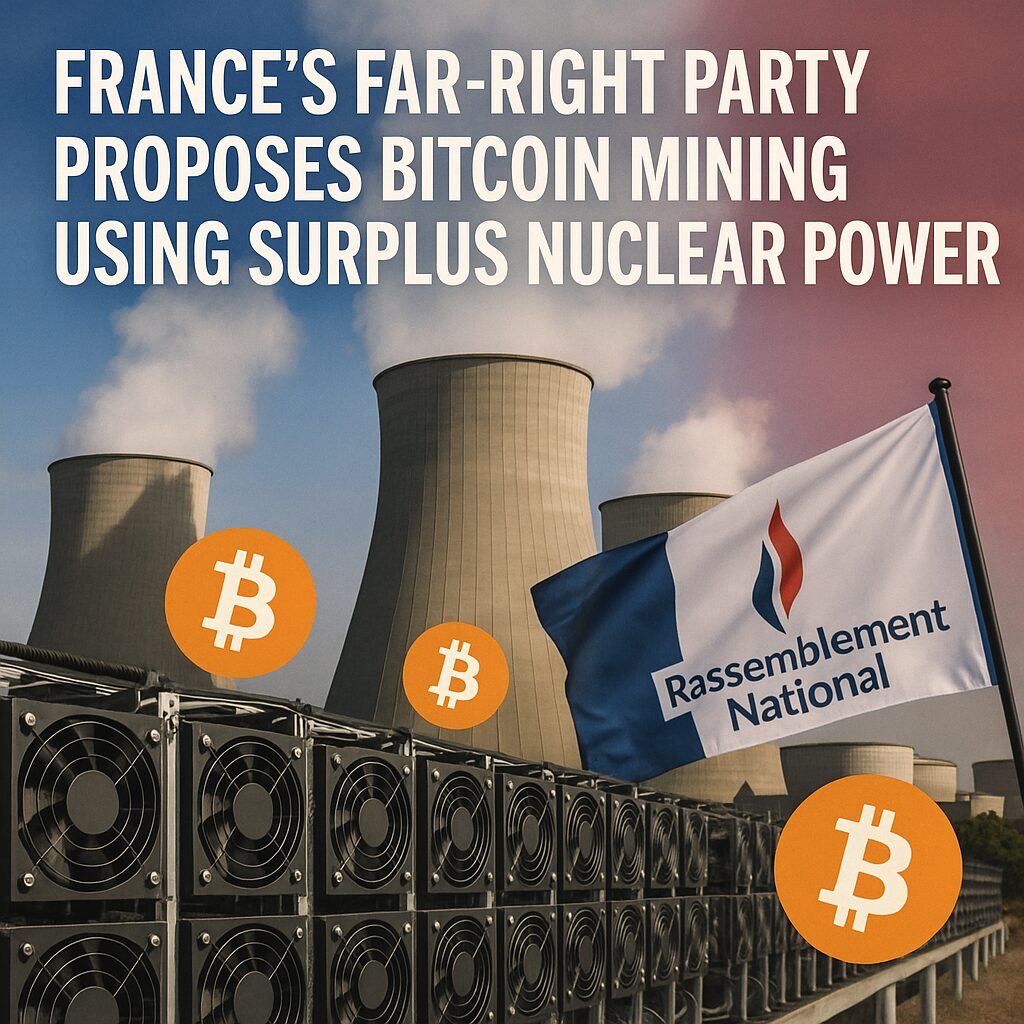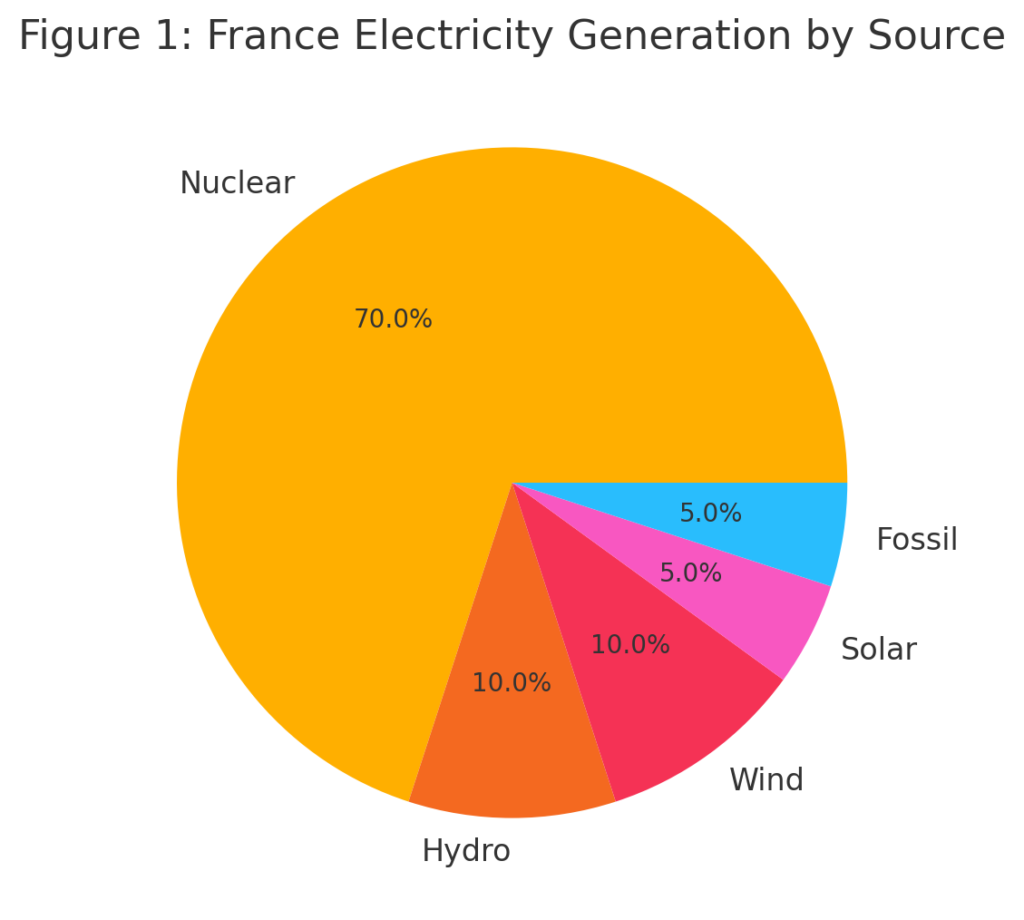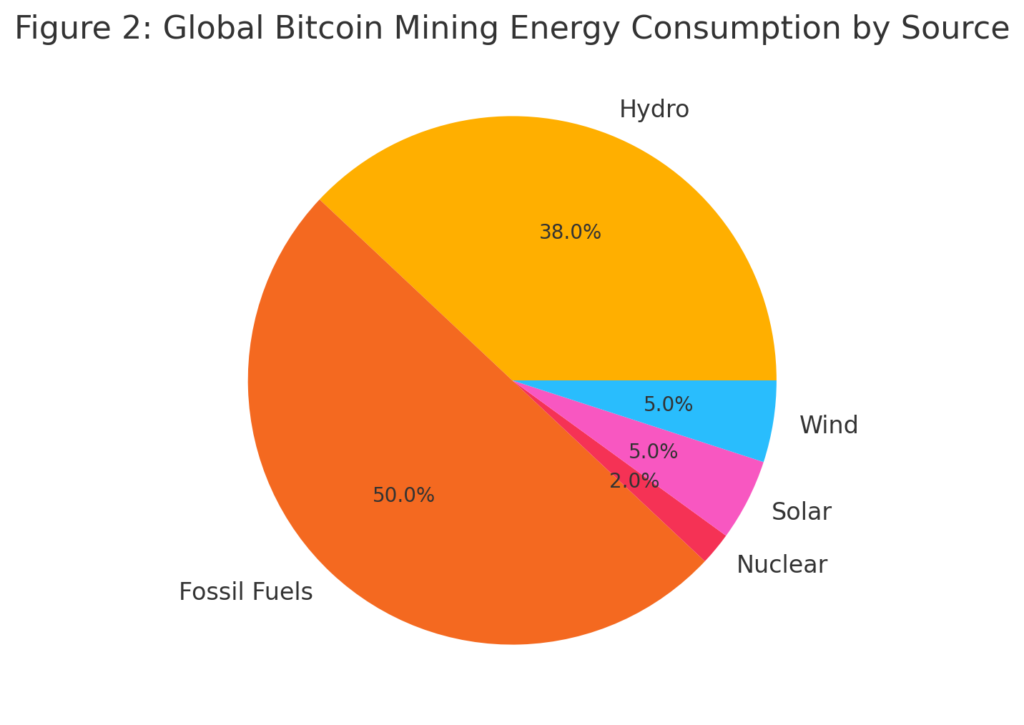
Main Points:
- Rassemblement National (RN) drafts a bill to harness idle nuclear energy for Bitcoin mining, marking a stark policy reversal under Marine Le Pen’s leadership.
- The plan leverages France’s status as the EU’s largest nuclear power producer, aiming to monetize surplus electricity at EDF sites.
- Similar initiatives have emerged globally, including Pakistan’s 2,000 MW commitment and Tether’s renewable-energy pilot in South America.
- Critics warn of potential grid impacts, national security concerns, and the environmental trade-offs of crypto-mining incentives.
- Global context: U.S. states and federal initiatives (e.g., Texas’s Strategic Bitcoin Reserve, Trump’s executive order establishing a U.S. Bitcoin reserve) reflect diverse government approaches to digital-asset policy.
- Economic analysis suggests one gigawatt of idle power could generate up to $150 million annually, though volatility in Bitcoin prices and hash-rate dynamics remain uncertainties.
- The proposal could fast-track France’s digital-asset sovereignty agenda but risks politicizing energy policy and fueling blockchain’s energy-use debate.
Background: France’s Nuclear Dominance
France leads the European Union in nuclear generation, producing 338,202 GWh in 2023—over half of the bloc’s total output. Yet, more than two-thirds of the thermal energy from fission is lost as waste heat each year. Tapping this surplus has long been proposed as a solution to both energy inefficiency and the high power demands of Bitcoin mining.
[Insert Figure 1 here: Figure 1: France Electricity Generation by Source]

Proposal Details: Drafting the RN Bill
During a March 11 inspection of the Flamanville plant, RN leader Marine Le Pen endorsed using idle reactor electricity for Bitcoin (BTC) mining. RN MP Aurélien Lopez-Liguori is spearheading legislation to permit Électricité de France (EDF) to host high-performance mining rigs directly at nuclear sites. The draft bill outlines:
- Infrastructure Deployment: Installation of ASIC miners on plant premises to operate during low-demand periods.
- Energy Allocation: Formal authorization for EDF to divert surplus megawatts to crypto-mining operations under state oversight.
- Revenue Sharing: Potential mechanisms for state-owned digital reserves or revenue-sharing models with the plant operators.
Political Shift: From Crypto Ban to Production
Marine Le Pen’s stance has undergone a dramatic evolution: in 2016, she campaigned to ban cryptocurrencies as Wall Street-backed tools of the elite; by 2022, she advocated regulatory frameworks; in 2025, she actively promotes on-shore crypto production. The RN’s pivot underscores its broader economic-sovereignty narrative, framing Bitcoin as an asset shield against global financial influence.
Global Context: Government Engagement with Bitcoin
France’s legislation joins a patchwork of government crypto strategies:
- Pakistan allocated 2,000 MW of coal-plant surplus for BTC mining and AI centers in May 2025.
- Tether is exploring mining with surplus renewable energy from agribusiness firm Adecoagro in South America
- Texas passed SB 21 to create a Strategic Bitcoin Reserve, formally recognizing BTC as a state asset.
- U.S. Federal: President Trump’s March 2025 executive order established a Strategic Bitcoin Reserve and Digital Asset Stockpile under the Treasury.
Technical and Economic Considerations
Bitcoin mining’s profitability hinges on power cost and network difficulty. Industry analysts estimate that one gigawatt of surplus electricity could yield roughly $150 million in BTC annually at current hash-rate and price levels. However, price volatility (e.g., BTC oscillating between $40,000–$60,000 in H1 2025) and hardware depreciation pose risks. Additionally, the grid-balancing effects of flexible mining loads could benefit peak-shaving but require robust demand-response integration.
[Insert Figure 2 here: Figure 2: Global Bitcoin Mining Energy Consumption by Source]

Industry Reactions and Risks
Proponents hail the plan as “secure and extremely profitable,” while energy-sector critics caution against treating nuclear output as a dumping ground for crypto-mining. Key concerns include:
- Grid Stability: Sudden ramp-ups in mining load could challenge grid operators if not coordinated with demand forecasting.
- Security and Sovereignty: Hosting critical IT infrastructure at nuclear sites raises cybersecurity liabilities and potential targeting risks.
- Environmental Trade-Offs: While using existing electricity avoids new emissions, it may reduce incentives for renewable grid expansions or storage investments.
Future Outlook
If enacted, France’s bill could catalyze a novel public-sector-crypto nexus, positioning the state as a digital-asset manufacturer. This could spur EU-wide debates on energy policy, crypto regulation, and strategic reserves. It may also influence technological innovations in energy-efficient mining hardware and modular data-center designs at industrial sites. Conversely, electoral shifts or regulatory pushback—particularly from left-wing parties skeptical of deregulation—could stall implementation.
Conclusion
The RN’s proposal to mine Bitcoin using surplus nuclear power epitomizes the complex interplay between energy policy, digital assets, and political ideology. By repurposing otherwise wasted electricity for crypto-production, France may pioneer a hybrid model of state-supported digital-asset generation. Yet, balancing economic gains with grid resilience, environmental objectives, and public trust will be critical. As governments worldwide experiment with Bitcoin reserves and mining frameworks, France’s experiment will offer crucial lessons for the global blockchain ecosystem.

